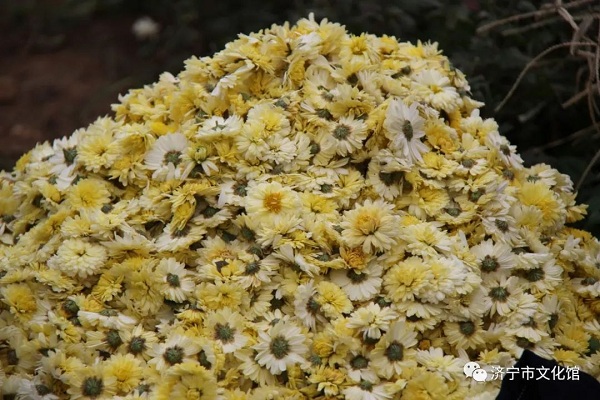Jiaxiang chrysanthemums


Dried Jiaxiang chrysanthemums can be used as ingredients for tea, traditional Chinese medicine and incense. [Photo/WeChat account of Jining Cultural Center]
The chrysanthemum planting and processing in Jiaxiang county in Jining, East China's Shandong province, boasts a long history dating back to the Spring and Autumn period (770-476 BC).
In the Qing Dynasty (1644-1911), Jiaxiang chrysanthemums were transported to Shanghai and Beijing through the Beijing-Hangzhou Grand Canal and were well received across the nation.
The production saw a significant decline in the late Qing Dynasty and was not resumed until the 1970s when the local government made great efforts to promote the once advantageous industry.
In 2021, Jiaxiang's white chrysanthemum planting areas totaled nearly 547 hectares, with an annual sales revenue of 30 million yuan ($4.45 million).
In traditional Chinese medicine, chrysanthemums are believed to be able to dispel excessive heat from the human body, clear the eyes and help clean out harmful elements in the body.
The Jiaxiang chrysanthemums are famous for the strong fragrance, beautiful white blossoms and nutritional properties.
According to professional tests conducted by the Shandong Institute for Food and Drug Control, Jiaxiang chrysanthemum's contents of chrysanthemum oil, luteolin glycoside and chlorogenic acid are higher than other types of chrysanthemums such as Hangzhou chrysanthemums and Bozhou chrysanthemums.
MOST POPULAR
- 1 Guangdong remains top foreign investment destination in China
- 2 Boao establishes zero-carbon zone in pursuit of sustainable development
- 3 Countermeasures against foreign sanctions empowered
- 4 Things to know about Boao Forum for Asia Annual Conference 2025
- 5 China introduces new measures to facilitate travel, residency for HK, Macao, Taiwan residents on mainland







